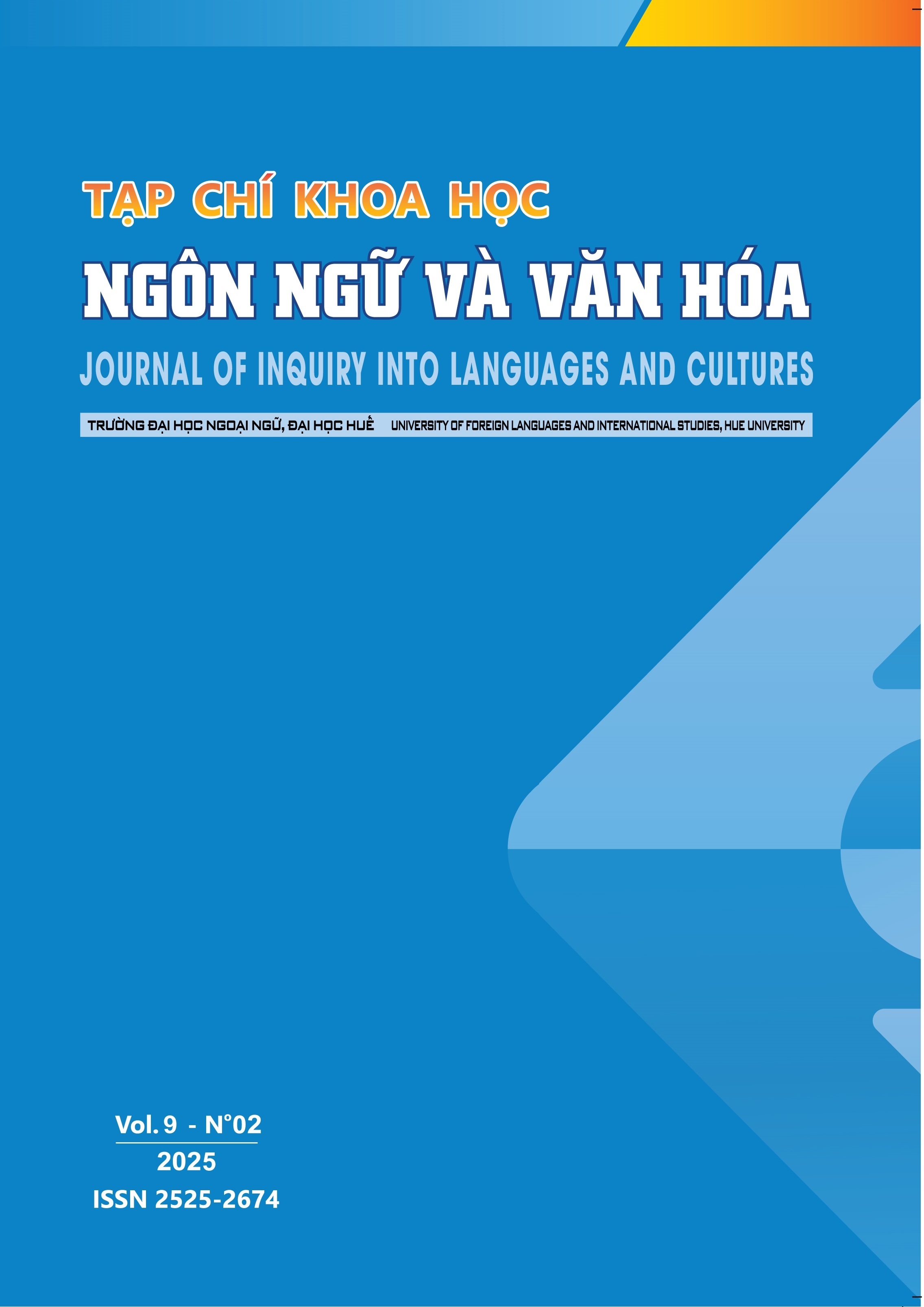CONCEPTUAL MAPPINGS OF STRUCTURAL METAPHOR “INFLATION IS AN ENEMY” IN VIETNAMESE ONLINE ECONOMIC DISCOURSE
DOI:
https://doi.org/10.63506/jilc.92.333Keywords:
conceptual metaphor, economic discourse, inflation, CMA, Vietnamese mediaAbstract
This study investigates the conceptual metaphor INFLATION IS AN ENEMY in Vietnamese online economic discourse from 2015 to 2025. Drawing on the framework of Conceptual Metaphor Theory and employing a combination of the Metaphor Identification Procedure (MIP) and Critical Metaphor Analysis (CMA), the paper analyzes a corpus of 320 articles from major Vietnamese news sources. The findings demonstrate a variety of ontological correspondences between the source domain of ENEMY and the target domain of INFLATION. These metaphorical mappings not only serve cognitive functions - rendering an abstract economic concept more comprehensible - but also contribute to shaping public attitudes, emotional responses, and support for monetary policy interventions. The study also offers implications for metaphor-based teaching in economics and further research on metaphor variation across cultures and media platforms.
Downloads
References
Charteris-Black (2005). Politicians and Rhetoric: The persuasive power of metaphor. Basingstoke: Palgrave Macmillan.
Charteris Black (2014). Analysing Political Speeches: Rhetoric, Discourse and Metaphor. Basingstoke: Palgrave Macmillan. https://doi.org/10.1007/978-1-137-36833-1
Chunyu Hu & Zhi Chen (2015). Inflation Metaphor in Contemporary American English. Higher Education Studies, 5(6), 21-35. https://doi.org/10.5539/hes.v5n6p21
Chunyu Hu & Huijie Liu (2016). Inflation Metaphor in the TIME Magazine Corpus. English Language Teaching, 9(2), 124-135. https://doi.org/10.5539/elt.v9n2p124
Hoang Phe (2005). Vietnamese Dictionary. Institute of Linguistics and Danang Publishing House.
Lakoff G. & Johnson M. (1980). Metaphor We live by. Chicago: The University of Chicago press.
Le Vien Lan Huong (2023). Comparing Structural Metaphors in Vietnamese and English Medical News (Ph.D. Dissertation), Graduate Academy of Social Science.
Marisol Velasco Sacristán (2009). A translation approach to metaphor teaching in the LSP classroom: sample exercises from a Business English syllabus, IBÉRICA, 17, 83-98.
Nguyen Tien Dung (2020). Ontological Metaphors Targeting 'EVIL' in English and Vietnamese Political Discourse. Tạp chí Khoa học ngoại ngữ, 62, 19-25. https://doi.org/10.56844/tckhnn.62.77
Pedro A Fuertes-Olivera and Isabel Pizarro-Sánchez (2001). The Translatability of Metaphor in LSP: Application of a Decision-Making Model. Revista Alicantina de Estudios Ingleses, 14, 73-91.
Pragglejaz Group (2007). MIP: A method for identifying metaphorically used words in discourse. Metaphor and Symbol, 22(1), 1-39. https://doi.org/10.1080/10926480709336752
Silaski N & Durovic T (2010). CATCHING INFLATION BY THE TAIL - Animal metaphoric imagery in the conceptualisation of INFLATION in English. IBÉRICA, 20, 57-80.
Wicke P, Bolognesi MM (2020) Framing COVID-19: How we conceptualize and discuss the pandemic on Twitter. PLoS ONE 15(9): e0240010. https://doi.org/10.1371/journal.pone.0240010 PMID: 32997720














